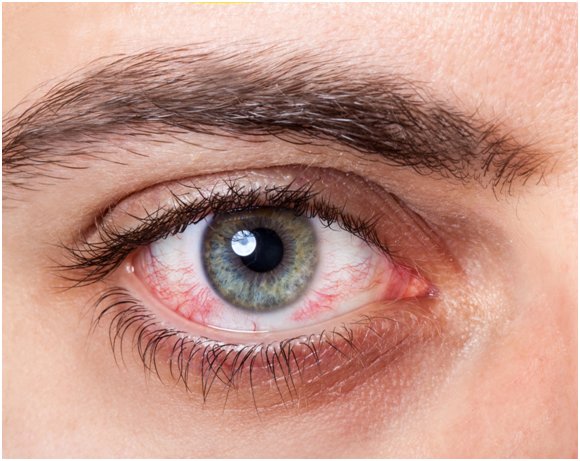Q: When my allergies kick up, using a nasal spray helps my sneezing and runny nose, but my eyes are still red and itchy. Can an eye drop help me?
Years ago, I bought my “dream” car, a classic jet-black 1985 Jeep CJ7 hardtop. I can still remember a mid-August Saturday afternoon when my husband Charlie and I took the top off the Jeep and drove through the back roads of central Ohio.Moist earth greeted us as we cruised by rows of tall stalks of corn alternating with lush fields of bushy soybeans.
Saturday afternoon was magic, but Sunday morning was a nightmare. When I woke up, my nose was stuffed up nose, and my eyes itched like fire.
“What could have set off my allergies? The only thing I’m allergic to is ragweed, and we drove past corn and soybeans.”
“I hate to tell you, honey, but we definitely drove past ragweed yesterday. I saw TONS of it growing thick in the ditches by the sides of the road.”
“Aaargh!”
If you need to soothe the discomfort of itchy eyes from allergies gone wild, you’ll find several eye drops without a prescription. How do you choose the best one?
Lubricating eye drops can ease the burning and help relieve dryness. Systane®, GenTeal®, or Refresh® help reduce the “sand in your eyes” feeling by flushing pesky pollens away,but can’t shut down your allergic reaction starts.
Decongestant eye drops help your eyes look less red or “bloodshot” by shrinking the blood vessels in the whites of your eyes. They can help reduce puffiness around your eyelids but don’t help reduce allergic reactions.
Naphazoline is the only decongestant eye drop available without a prescription. It is available as Naphcon®, and also in combination with an antihistamine, such as Visine-A®and Naphcon-A®. The “A” in Visine-A® and Naphcon-A® means it contains an antihistamine. Eye drops containing naphazoline can cause dry eyes and aggravate certain types of glaucoma, threatening your vision. Because of this risk, avoid using naphazoline eye drops for more than 3 days at a time. If you have glaucoma, you should avoid using naphazoline eye drops completely.
Antihistamine eye drops help reverse eye itching and swelling from allergies. Pheniramine maleate is an antihistamine available in both Visine-A® and Naphcon-A® eye drops. These products also contain the decongestant naphazoline, so you should avoid using either of them for more than 3-5 days at a time.
There are now more effective eye drops to use when your allergies strike. Medicines called mast cell stabilizers work hard to combat your allergies in two ways: by preventing your allergic reaction from starting and by calming it down once it starts.
When you encounter something you are allergic to, a chain reaction occurs. This reaction is triggered by a chemical your body makes called histamine.
Your body stores histamine in specialized cells called mast cells. Mast cells full of histamine are concentrated in your eyes, nose, and skin. When your body encounters something you are allergic to like cat dander or pollen, your mast cells react by releasing their stored histamine into your bloodstream.
Once freed, histamine triggers the familiar misery of redness, swelling, and itching of an allergic reaction.
Medicines called mast cell stabilizers BLOCK this chain reaction from getting started because they keep histamine safely tucked away inside your mast cells.
Ketotifen and olopatadine are mast cell stabilizers used in eye drops that are very effective at both preventing and relieving itchy and puffy eyes. Once sold as the prescription drug Zatidor®, ketotifen is also available as Alaway® brand eye drops. Prescription-strength olopatadine (Pataday®) is now available without a prescription.
Here are 4 Tips on Using Eye Drops for Allergies:
- Avoid naphazoline eye drops.
Decongestant eye drops don’t address the allergic reaction and only reduce redness. Limit your use of naphazoline eye drops to three days at a time,and avoid it entirely if you have glaucoma.
- Choose either ketotifen (Zatidor®, Alaway®) or olopatadine (Pataday®) eye drops for the best results.
Ketotifen and olopatadine are not just antihistamines. As mast cell stabilizers, they also work to prevent allergic reactions. Both are safe to use in children as young as 2 or 3 years old.
- Use only one drop in each eye.
Any more than one drop at a time will just run out and be wasted. Wait a bit before giving yourself another dose.
- Keep it clean.
Always wash your hands first and avoid touching the tip of the dropper directly to your eye or to any other surface.


